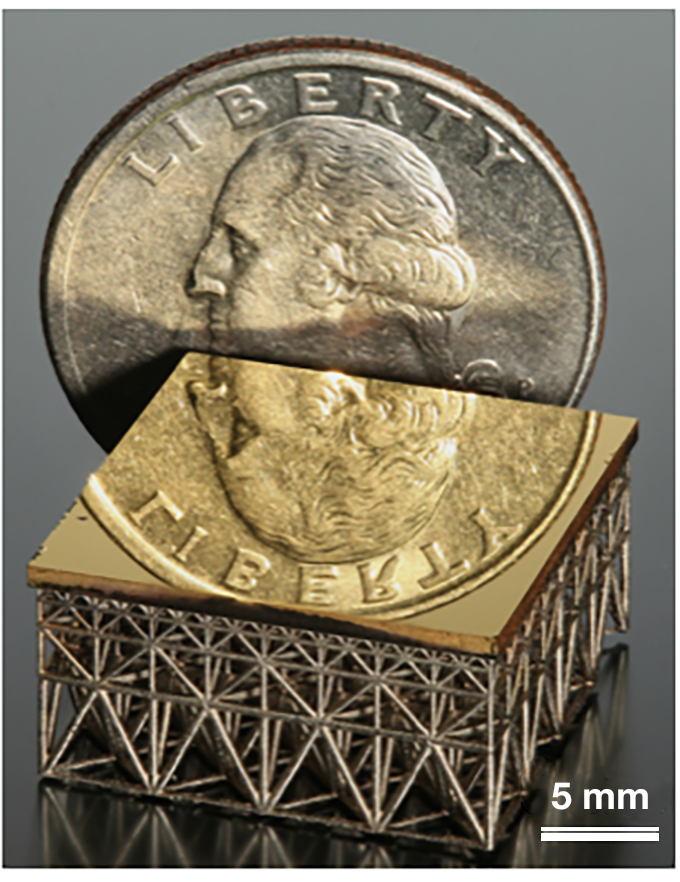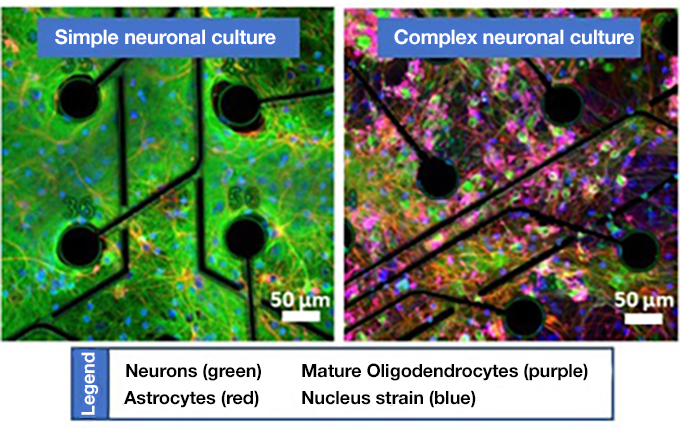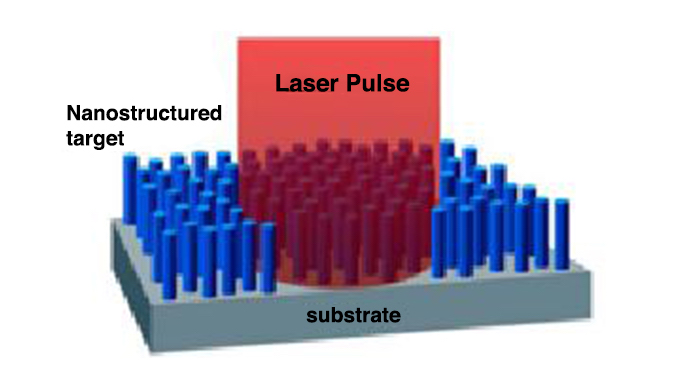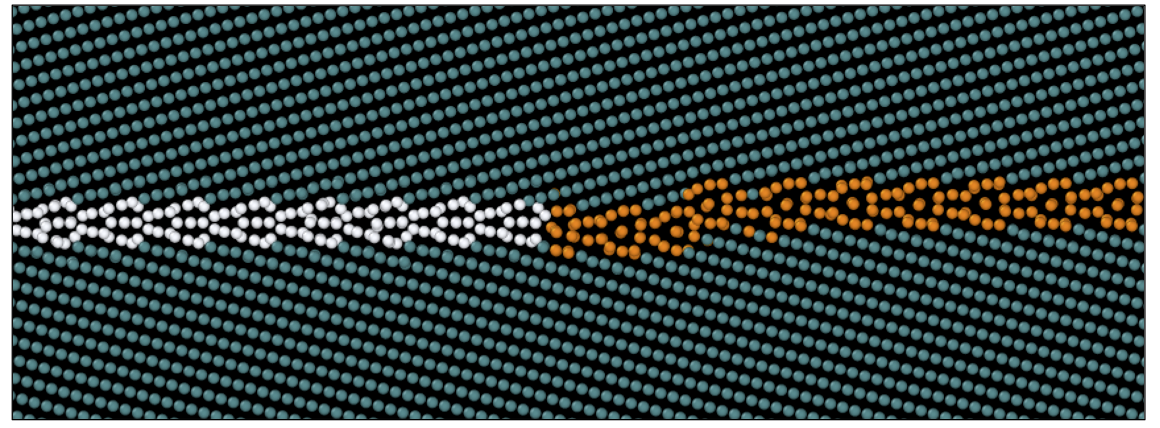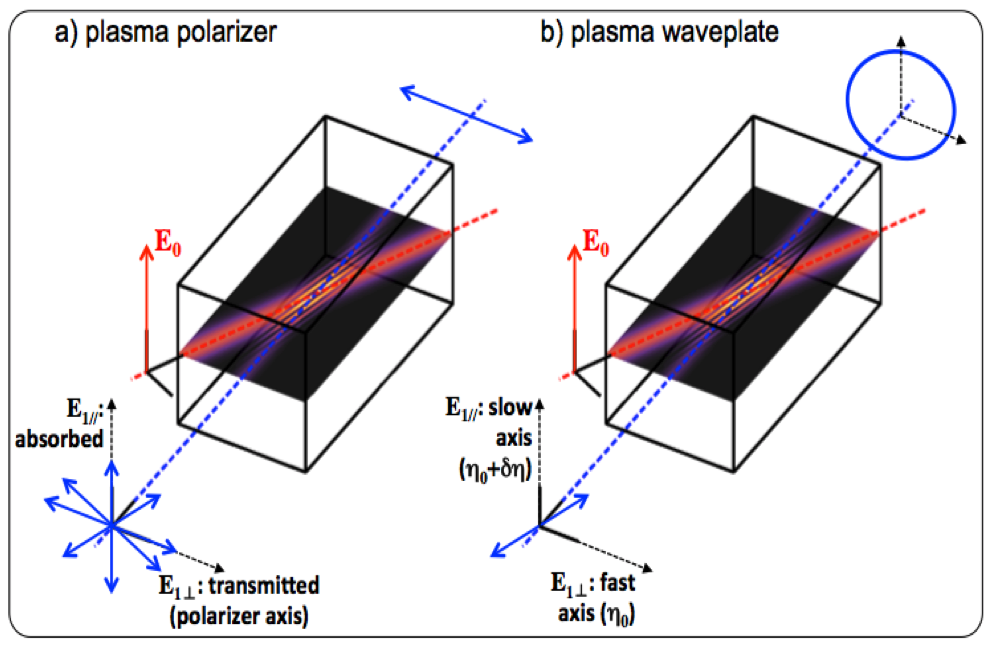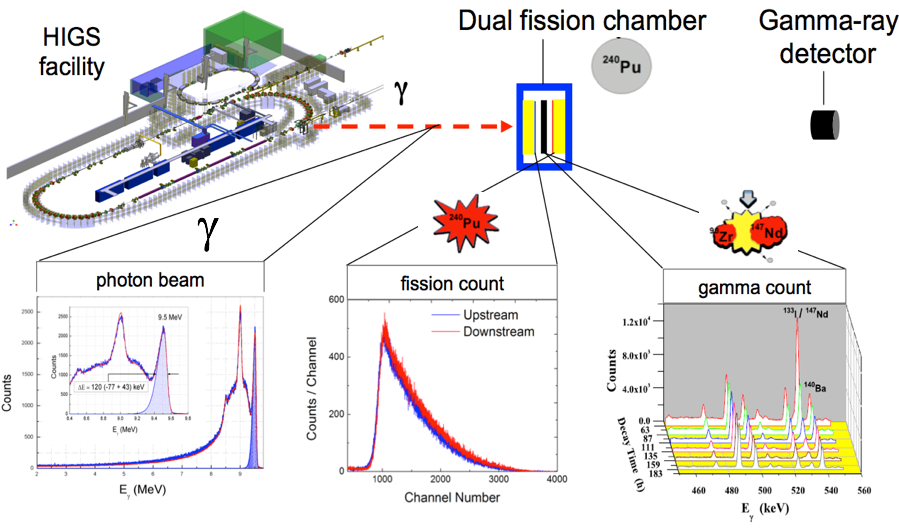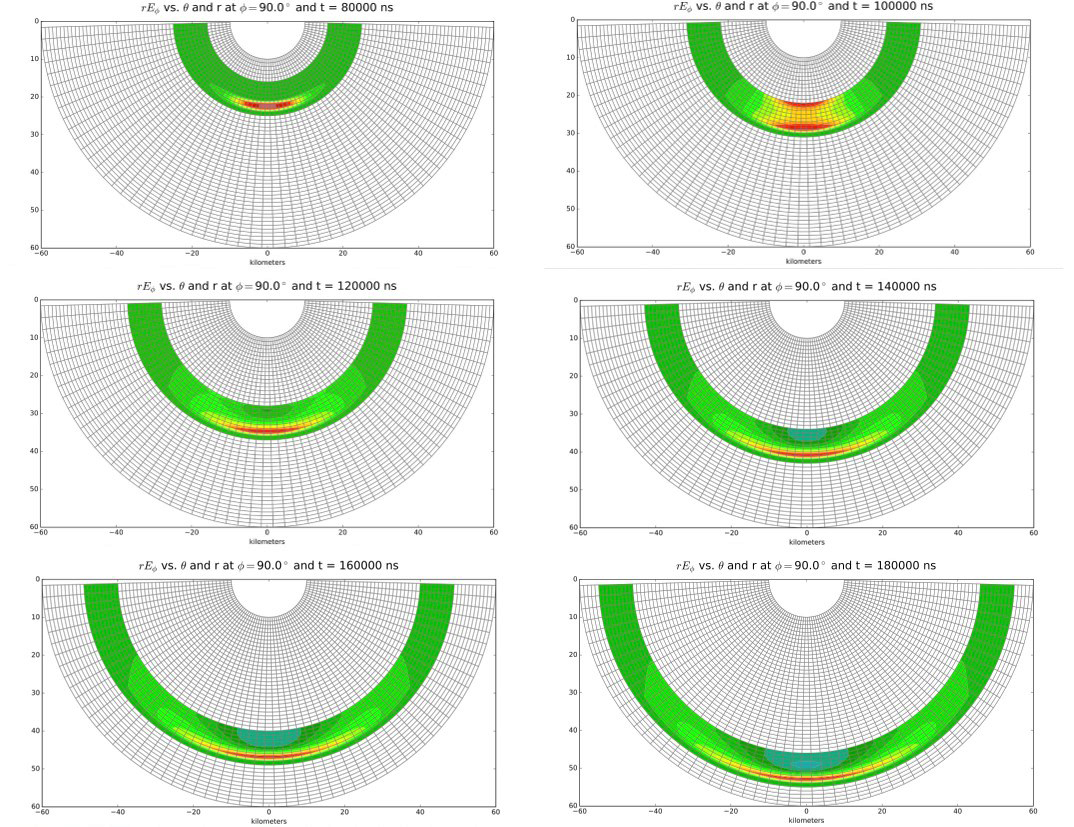This section provides a sampling of research projects from this year’s annual report, representing a range of categories and various stages of completion. For reference, project numbers that begin with 15 were launched in 2015 and are now complete; those beginning with 16 or 17 were launched in 2016 or 2017, respectively, and are now likely midstream.
Project #16-SI-003: Fabrication of Functionally Graded Optical Components Using Additive Manufacturing
Principal investigator: Rebecca Dylla-Spears
Mission/competency: Advanced Materials and Manufacturing
Executive summary: Using additive manufacturing methods, researchers are investigating new classes of functionally graded optical materials with spatially tailored changes in properties.
A group of researchers led by Rebecca Dylla-Spears has developed a two-part process that uses direct ink writing to three-dimensionally (3D) print optically transparent glass structures with sub-millimeter features. In this process, special inks made of colloidal-silica suspensions are extruded through a nozzle in a programmable pattern to form silica green bodies (porous, low-density structures). These structures are dried and heated to temperatures below the melting point of silica to sinter the green body into a fully dense, amorphous, transparent solid structure. This process enables the fabrication of optimal, robust, lightweight, and compact optics that cannot be achieved by conventional means.
Among their many achievements, researchers demonstrated that this technique can produce
- a transparent ceramic-laser gain medium with a gradient in absorption and gain coefficients,
- a silica-glass aberration-corrector plate with a gradient in refractive index, and
- a large metal aspherical mirror with a gradient in stiffness (see figure).
This research supports the development of compact, high-average-power laser systems for inertial-fusion energy, defense, and industrial applications.
Project #17-SI-002: An Investigational Platform of the Human Brain for Understanding Complex Neural Function
Principal investigator: Nicholas Fischer
Mission/competency: Bioscience and Bioengineering
Executive summary: Researchers are developing a fully validated and functional first-of-its-kind model of the central nervous system that recreates the human brain's microenvironment and architecture.
Understanding the structural complexity, exposure susceptibility, and mechanisms of disease development in the human brain is critical in creating rational interventions for neurological impairment and illness. To analyze molecular and cellular interactions, however, a human brain model is required. Animal models have been the sole in vivo model available for nervous system studies, but species-specific differences prevent the translation of findings to humans. Simple cell-culture systems provide basic insights into molecular mechanisms but are too far removed from complex in vivo microenvironments. Researchers are using a Livermore-developed, in vitro, chip-based human investigational platform to study neuronal function in a physiologically relevant human-based model of the central nervous system that is fully capable of interrogation. The platform incorporates three human-tissue systems: the peripheral nervous system, the central nervous system, and the blood–brain barrier. The team is increasing the cellular and architectural complexity of the current platform to understand differences in human neural-network development, mechanisms of disease, and responses to chemical stimuli in simple and complex neuronal cultures.
Researchers are developing a breakthrough in vitro system that will
- be fully validated and functional;
- recapitulate the cellular composition and spatial organization of key brain regions, thus providing unprecedented insight into the mechanistic workings of the human brain;
- address fundamental scientific questions about the function and network interaction of complex neural tissue; and
- integrate the Laboratory's blood–brain barrier model with the central-nervous-system device, providing in-depth analysis of multiple-neuron interactions as they pertain to chemical exposures (and countermeasures), disease, and changes in their microenvironment.
The project addresses fundamental questions about complex neuronal interactions as they pertain to chemical exposures, associated countermeasures, disease, and mitigations.
Project #15-ERD-054: Compact Lasers Power Ultrahigh-Energy-Density Science
Principal investigator: Riccardo Tommasini
Mission/competency: High-Energy-Density Science
Executive summary: Researchers are generating and studying matter in extreme conditions by irradiating targets of nanometer-scale wire arrays with high-energy short-pulse lasers to achieve ultrahot dense-matter regimes.
Using compact lasers, researchers have created pressures of more than a billion atmospheres, equivalent to pressures at the center of a star. These conditions of extreme pressure and energy density have previously been created in the laboratory only by the world's largest lasers, which are the size of stadiums; in this project, a new path to creating such extreme conditions with smaller, room-sized lasers is discovered. Working with an international team, researchers used intense, ultrashort laser pulses to irradiate arrays of aligned nanometer-scale wires. The experiments accurately measured how deeply these extreme energies penetrated the nanostructures. Measurements were by made by monitoring the characteristic x-rays emitted from nanowire arrays, in which material composition changes with depth. Based on extrapolation from these experiments by means of numerical modeling, scientists predict that even higher pressures—greater by a factor of 100—can be created using higher intensity lasers. These results open a path to obtaining unprecedented pressures and energy densities in the laboratory with compact lasers.
The ability to create matter in the ultrahigh-energy-density regime using small facilities will
- make extreme plasma regimes more accessible for fundamental studies and applications,
- enable researchers to make new inquiries into ultrahigh-energy-density physics, and
- inform the study of laser-driven fusion.
This research advances the study of atomic processes in astrophysical and extreme laboratory environments.
Project #17-LW-012: Discovering Phase Behavior of Materials Interfaces with Evolutionary Algorithms
Principal investigator: Timofey Frolov
Mission/competency: High-Performance Computing, Simulation, and Data Science
Executive summary: This research uses atomistic simulations to provide details of material structures at interfaces, which strongly influence the mechanical, electronic, and optical properties of the materials.
Recent experimental evidence suggests that grain boundaries demonstrate the same properties as bulk materials—that is to say, they exhibit phase behavior by existing in multiple states and showing first-order transitions among them. Grain boundaries govern many properties of polycrystalline materials, including the vast majority of engineering materials. The occurrence of different grain-boundary structures at elevated temperatures may explain the failure of current modeling predictions.
The study of grain-boundary phase transitions is an emerging field dominated until recently by experimentation, as opposed to modeling. The bottleneck in exploring this phenomenon with atomistic modeling has been the lack of a robust computational tool that can predict interface structure. In this project, the research team has developed a new computational tool based on evolutionary algorithms that performs efficient grain-boundary structure searches and a clustering-analysis tool that automatically identifies different grain-boundary phases.
If successful, this research will
- lead to a mesoscale simulation method for modeling phase, grain, and defect microstructure evolution;
- demonstrate that interfaces exhibit phase behavior and strongly influence the mechanical, electronic, and optical properties of materials; and
- enable rapid, cost-effective development of advanced materials and manufacturing processes.
This work tackles the need for better understanding of how phase behavior affects material properties and ways to use this information in predicting the characteristics of new materials before synthesis.
Project #16-LW-022: Extreme Nonlinear Optics of Plasmas
Principal investigator: Pierre Michel
Mission/competency: Lasers and Optical Science and Technology
Executive summary: State-of-the-art optical systems typically consist of crystals whose optical properties are controlled by applying external fields (electric, acoustic, or magnetic) and whose peak performance is limited by damage to these optics. This project explores the feasibility of light-manipulation techniques using plasma photonics, in lieu of crystals, to raise the damage threshold, lower costs, and reduce the physical size of optical systems by several orders of magnitude.
The limitations of the crystal optics used in high-power lasers such as those at Lawrence Livermore’s National Ignition Facility have been a persistent and expensive impediment to progress in the field of Inertial Confinement Fusion. Early experiments in an alternative approach involving plasma photonics (the science of using plasma to manipulate light) yielded improvements, but failed to provide the heightened level of energy transfer suggested in theoretical and computational models. To test the validity of the theories underlying these models, a team of Livermore scientists conducted fundamental research in laser–plasma optics, using a second laser to control the optical properties of the plasma generated by the first. In this LDRD-funded project, the team described the scientific underpinnings of an aspect of the field that had been almost entirely theoretical and poorly understood.
Among their extraordinary accomplishments, the team
- mapped the refractive-index perturbation of plasma, using wavelength tuning—significant because the refractive index is what enables control over the optics;
- demonstrated the use of a plasma polarizer (an optical tool) and a plasma waveplate, which controls the polarizer; and
- derived a theory describing the establishment of a steady state for the refractive microstructures imprinted by lasers on plasmas.
This insight into laser–plasma optics, particularly crossed-beam energy transfer, is a game-changing development in the research of Inertial Confinement Fusion. To acknowledge the importance of the results of this LDRD project and the work that led to it, Michel received an award from the Laboratory’s Early and Mid-Career Recognition Program in 2017 (see Awards and Recognition).
Project #17-LW-020: Modernizing Nuclear Fission Models
Principal investigator: Anton Tonchev
Mission/competency: Nuclear, Chemical, and Isotopic Science and Technology
Executive summary: In a scientific first, this project compares fission-product yields of the same plutonium-240 compound nucleus as produced via two different reactions. Results will provide highly accurate experimental data for nuclear-theoretical analysis, as well as benchmarks for theoretical models to assess the predictability of nuclear-fission simulations.
In 1939, physicists formulated a theory of neutron-induced nuclear fission based on the hypothesis of the compound nucleus. The “Bohr hypothesis,” still at the heart of every theoretical fission model, states that the decay of a compound nucleus for a given excitation energy, spin, and parity is independent of its formation. Although this hypothesis is widely accepted by both theorists and experimentalists, its implications, particularly concerning fission-product yields, have never been experimentally verified to high precision. In previous attempts, the neutron-induced fission cross-sections were compared to estimations based on surrogate reaction data using light ion particles inducing fission. Moreover, these estimations were obtained using a simplistic theoretical approach, not independent data.
In this project, the research team is conducting the first experiment that will validate to within 1– 2% absolute uncertainties the practical consequences of the hypothesis during induced nuclear fission. The team is comparing fission-product yields of the same plutonium-240 compound nucleus produced via two different reactions: one in which neutrons interact with plutonium-239 and another in which gamma rays interact with plutonium-240. By using monoenergetic photons, they will create an excited plutonium-240 target at different energies and compare the resulting yields with those obtained from neutron-induced fission on plutonium-239.
If successful, the team will
- fill a long-standing gap in nuclear data;
- validate theoretical fission models with the most accurate fission-yield information acquired so far; and
- enable an accuracy assessment of Livermore’s simulation predictions.
The results of this research will provide critical information in support of national efforts in nuclear-weapons stockpile management by better revealing the condition of the stockpile.
Project #15-ERD-066: Self-Consistent, Three-Dimensional Calculations of Electromagnetic Pulse Propagation
Principal investigator: David J. Larson
Mission/competency: Stockpile Stewardship Science
Executive summary: Researchers have developed a suite of modern tools for simulating the generation and propagation of nuclear bursts in three spatial dimensions.
The essential physics involved in the generation of an electromagnetic pulse have long been known, but it has not been possible to simulate nuclear bursts, including three-dimensional geomagnetic effects and complex geometries. In a project funded by Livermore’s LDRD Program, a team of Livermore researchers captured previously neglected physics using new computational methods to address the shortcomings of current simulation codes and incorporate significant recent findings. As a result, they have developed a suite of modern tools for simulating the generation and propagation of the prompt electromagnetic pulse (EMP) in three spatial dimensions. These tools include EMPulse, a comprehensive, first-principles code with full generality.
This project advances the state of the art in nuclear-weapons effects. Modern assessment of electromagnetic pulses is essential for
- developing nuclear forensic capabilities based on signals measured in urban and space environments;
- predicting the propagation of pulses through the ionosphere; and
- establishing improved radiation-hardening standards.
This research has surprisingly broad application beyond Livermore’s national missions in nuclear-weapons stockpile-stewardship management and nuclear nonproliferation. Recent interest in EMP effects on the nation’s electric-power grid has provided an environment for extended use and development. For example, EMPulse code has been used in a research project at LLNL funded by the Electric Power Research Institute.


